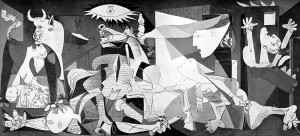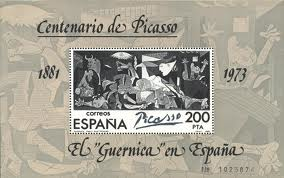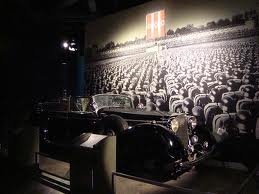In the book Decolonizing the Mind, Kenyan writer Ngugi wa Thiong’o describes his own experience in of how English decisively matters during the education of one child in Kenya. The real power of imperialism resided not at all in the cannons of the first morning but in what followed the cannons–new school. As Cheikh Hamidou Kane says, “The cannon forces the body and the school fascinates the soul”. Violence, expropriation, conquest, slavery can definitely take the land over, but English, as a language that represents and carries imperialist’s culture, was the official vehicle and the magic formula to colonial elitedom. This visibly gentle method of ruling the black continent has planted English as its true weapon and now when really talking about African Literature, people sink into the unending discussion of “what is African Literature” since the language they use is no longer the original, traditional mother-tongue that embedded in their mind. Thus the crisis of definition makes people truly realize how powerful this after-cannon colonialism could. Here, the author has to stress the importance of language: a mean of communication and a carrier of culture. So what the author initiates is the resort to their native language. And this book becomes him farewell to English.
Homi K. Bhabha introduces the concepts of ambivalence and hybridity. They are seen as the consequence of “resistance” that colonized people react to the imposition on them of an alien language and culture. This time in a different continent and by a different methodology, the author points out that the Bible, as religious mediation and as a cultural and linguistic medium, was questioned of its presence but more of its signification–a strategic device in a specific colonial engagement and an appurtenance of authority. As a matter of fact, there is no unsigned, undisguised Christian among Indians. But the author failed to mention that Indians have their own religion to faith in. Hinduism is deeply rooted in this nation from generation to generation. The ideal purpose of imperialist that proselytize seems impossible to happen. So when Bible books distributed among people, it didn’t erouse such influence that it was presumed to be. Maybe the ruler underestimated what religion means to this nation. But now English is the second official language of India, and Christian is scattered compared to the mass believers of Hinduism.
It is true that when imperialists encounter a land which could bring whatever economic benefits, they crushed for the wealth or the infinite labour power by violence. But it was also the collision of two cultures, two languages and two religions. The consequences produced had never been expected and was impossible to forecast. It’s easy to judge the victory of a war in a battlefield, but in the field of cultures’ collision, which side is the winner is hard to define. Ambivalence, exists all along.
 This is how my readings started this week. Fortunately, I was able to save the moment by thinking about the new episode of the Walking Dead!! Yes The Walking Dead is going to make everything sound better. Little did I know that the Walking Dead WAS going to make everything better. As I was reading Foucault, I started to think of that show that makes me lie to my friends so I can stay home on Monday evenings and watch it without being disturbed. Foucault talked about the dispersion of power through society and used the plague as an example. As I keep reading, I remembered a discussion I had with another fellow student on the new season of the Walking Dead (WD para los aficionados!). Before we were brutally asked to go make some noise elsewhere, we were having a passionate discussion on the relations of power in the TV show. For those who have never watched the show, it is about people trying to survive in a world where the majority of the population has turned into zombies. As soon as somebody dies, they turn into a zombie. The only way to “kill” a zombie, it is by stabbing him in his head. Easy, breezy, beautiful! Now for those of you who want to watch the show, I am sorry to spoil it…but it is in the name of critical theory.
This is how my readings started this week. Fortunately, I was able to save the moment by thinking about the new episode of the Walking Dead!! Yes The Walking Dead is going to make everything sound better. Little did I know that the Walking Dead WAS going to make everything better. As I was reading Foucault, I started to think of that show that makes me lie to my friends so I can stay home on Monday evenings and watch it without being disturbed. Foucault talked about the dispersion of power through society and used the plague as an example. As I keep reading, I remembered a discussion I had with another fellow student on the new season of the Walking Dead (WD para los aficionados!). Before we were brutally asked to go make some noise elsewhere, we were having a passionate discussion on the relations of power in the TV show. For those who have never watched the show, it is about people trying to survive in a world where the majority of the population has turned into zombies. As soon as somebody dies, they turn into a zombie. The only way to “kill” a zombie, it is by stabbing him in his head. Easy, breezy, beautiful! Now for those of you who want to watch the show, I am sorry to spoil it…but it is in the name of critical theory.






















